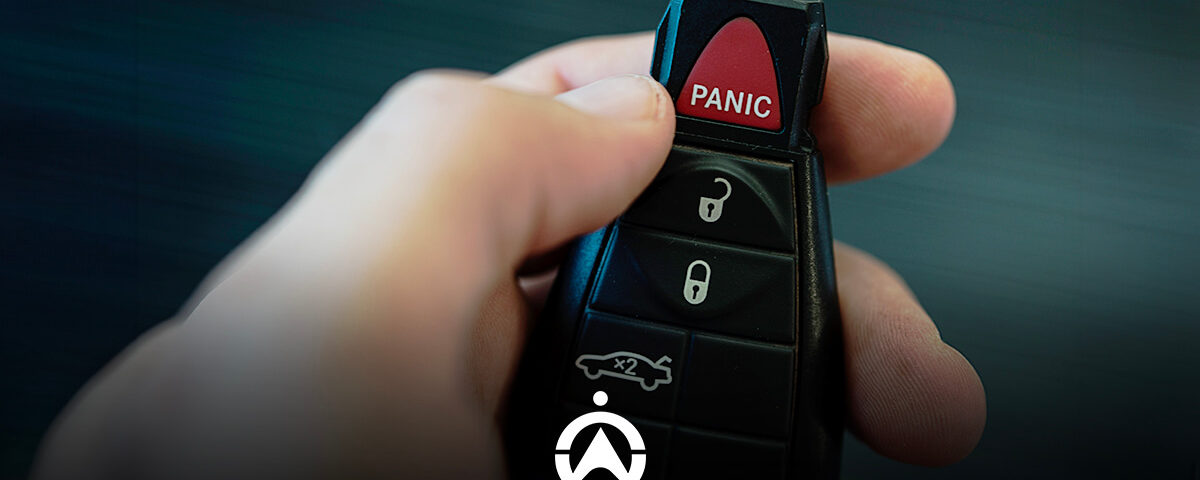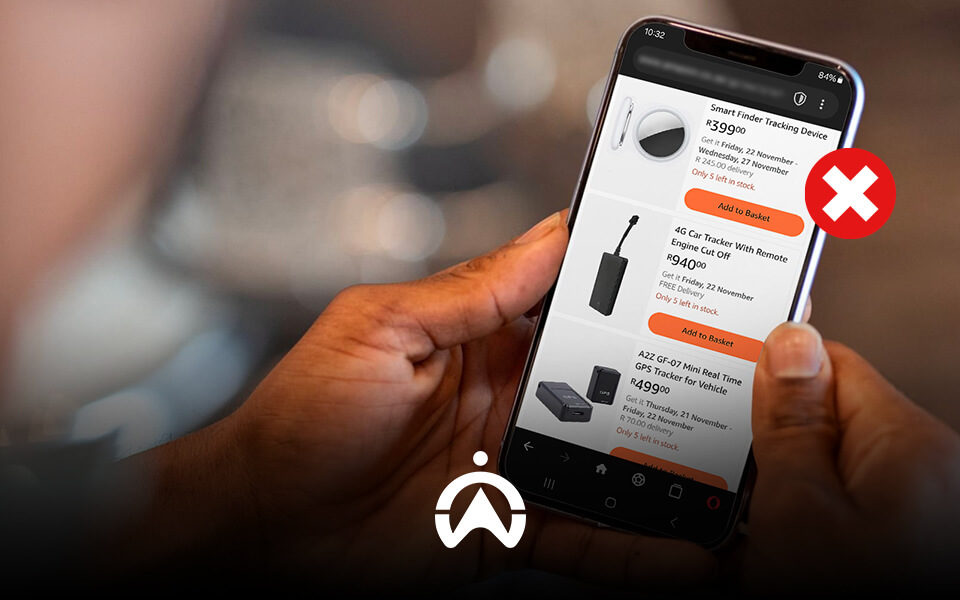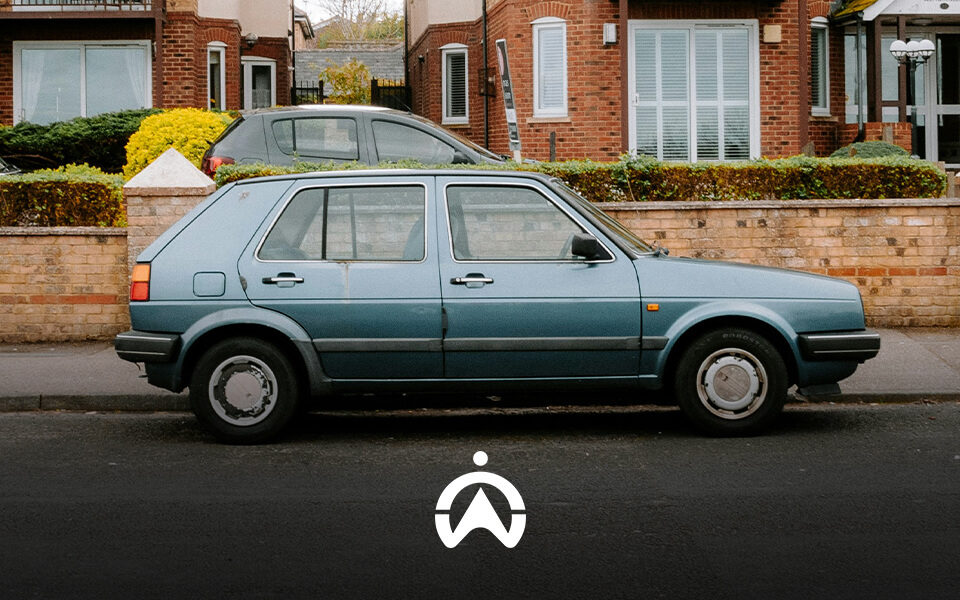Get The Best Car Panic Button When You Need It
Whether we’re on our way to work or making a delivery, roads are a dangerous place. So, can we dispute the necessity of an in-vehicle panic button in such an environment?
Our major highways and quieter roads are both tainted with the risk of hijackings and a sky-high accident rate, so having help at the touch of a button can be that extra lifeline you never knew you needed.
Find out how you can protect yourself and your fleet with this smart technology.
The difference between a panic button and an alarm system
Panic buttons sound pretty straightforward, right? With so many types, though, it’s worthwhile familiarising yourself with this lifesaver of a tool. An easy way to understand how a panic button works is to compare it to an alarm system. Nearly all makes and models now come equipped with alarm systems, and aftermarket options are also available for those who don’t have this as a standard feature.
Some alarm systems can be activated by pushing a button—similar to a panic button. However, the key difference between an alarm system and a panic button is that, upon activating an alarm, it makes a loud sound with the aim of deterring criminals and alerting passers-by of suspicious activity. When pushing a panic button, you activate a silent alert to authorities, a security control room, or other authorised personnel who can assist with dispatching the appropriate emergency services when you need them most.
Panic buttons can alert management or security personnel using Bluetooth, WiFi, or cell phone networks, making them conveniently mobile and user-friendly.
Are all panic buttons the same? Discover the best car panic buttons
While all panic buttons are designed to alert someone when you urgently need help, there are several types you can choose from, depending on how accessible you want them to be, where you want to place them, and when you’re most likely to use them. Here are some examples of panic button types, where you’d find them, and the type of scenarios they’re most often used in.
The mobile panic button
With a mobile panic button, it’s all in the name, and this handy personal security alert system goes everywhere you do beyond your vehicle. These panic buttons are usually found on security apps, so you’d need to have your phone with you if you want to use them. Once pressed, the alert will go to the specific security company or control room to which the panic button is connected, so you’re unlikely to find a panic button pre-installed or as part of the factory settings on your mobile phone.
Here are the main details you need to know about how a panic button works:
- It’s usually a small button or icon on your mobile phone’s screen.
- When pressed, it will alert a preselected emergency contact or designated control room.
- The panic button alert can include your mobile phone’s GPS location to help you be found in an emergency.
- Some panic buttons also sound an audible alarm as an initial deterrence tactic, in addition to contacting a control room or emergency contact.
In Mzansi, the private security industry is thriving, and most companies that provide personal patrolling home security services in conjunction with an alarm device will also have an app with a mobile panic button.
Designed to be quick and easy, specifically for high-stress situations, the mobile panic button has many perks. However, one of its downfalls is that it can still be a hassle to activate. Most people’s phones now have passcodes or require a fingerprint or face scan to unlock. Then, you’ll need to navigate to the relevant app, and only then can you push the panic button.
These few seconds can change your life, so finding smart ways to navigate this potential hassle, like making sure the app is on your home screen, etc., helps make the mobile panic button a good option for the everyday citizen on the go.
Built-in panic button
For those of us who travel extensively, especially as part of our jobs, having a built-in, hidden panic button in our personal or company vehicle just makes a lot of sense. This safety feature is designed to help alert authorities and loved ones in the event of an emergency and is usually connected to a dedicated control room or monitoring centre. If you or your drivers often travel at night or in notoriously dangerous areas, the built-in version is a great way to offer peace of mind and an extra layer of security. Here’s a quick look at how in-vehicle panic buttons work:
- Signalling the alarm: First and foremost, someone needs to know that you’re in trouble, so sounding that alarm is the crucial next step.
- Alert transmission: Along with sounding the alarm, the technology that comes with the panic button sends important information like your exact location, and it can send further helpful data like the identity of the individual who triggered the alarm and the time of the incident.
- Response: The point of the exercise is to get a response as soon as possible, which is up to the control room. The control room will contact the individual in distress and dispatch help to the received location.
Installable panic button
If your car doesn’t come out of the factory with a panic button, don’t worry! After-market options are available to help you get peace of mind. Installables are also popular among fleets, with staff constantly on the road, as nobody will argue that South African roads are dangerous workplaces. These function a lot like a built-in panic button, as, after they’re installed, the user won’t be able to move them around or simply take them out of the vehicle.
These panic buttons work exactly the same as a mobile panic button in the sense that, once pushed, a control room or emergency agent will be contacted. However, the installable panic button is not mobile, so it stays in one place, usually a discreet one, and only the driver should know its location, so you have that extra backup if you happen to be in danger.
The importance of smart panic button placement
When placing an after-market panic button in your vehicle, smart placement is key. Think not only hidden but accessible in an unobtrusive location, where the driver can reach out and press the button without taking their eyes off the road.
It’s also important to ensure the driver is aware of the panic button’s presence, especially if it’s hidden from plain sight.

Benefits and downsides of panic buttons
Can there be downsides to having a panic button in your vehicle? Like many other pros and cons, it depends on the situation. Don’t worry, though; being aware of the benefits and downsides can help you navigate these situations to make sure you get the most out of your panic button.
The most obvious benefit of an in-vehicle panic button is its convenience and direct access to help and safety. It can be placed on the dashboard, the steering wheel, or even on the driver’s car door for easy access that could potentially save lives.
The main downside, however, is closely linked to the main benefit, as having the panic button readily available for the driver might not be the best scenario for other passengers who may need to use it. Imagine children or elderly travellers who, without the driver’s knowledge, are experiencing an emergency but may not be able to reach the panic button or communicate their need for help. While this scenario is unlikely from a fleet perspective, it can be considered a drawback.
Apart from that, panic buttons don’t have many drawbacks for fleet or commercial drivers and can be a most valuable layer of security when a driver cannot reach any other means of communication in an emergency situation.
Safety tips to help you avoid panic button situations
Whether you’re on a private trip or doing a delivery, safety is key. If you can take measures to avoid getting yourself into a situation where you need a panic button, it’s even better. Stay safe by taking a look at some of the SAPS’s top vehicle safety tips:
1. Keep those doors locked and windows up
It’s easy to forget about and leave a window open after parking and getting out of your car. Modern models auto-lock after parking, but doing it yourself immediately after you exit your car is a great way to keep yourself accountable for your vehicle’s safety as well as your own by practicing vigilance.
2. Don’t trust unknown people who want to “help you”
Good Samaritans are rare, so when someone tries to indicate that you have a flat tyre and you can’t actually feel the wobbly sensation while driving, don’t stop. Even if something feels off with your vehicle due to possible road spiking, drive on as far as you can to a petrol station or away from the individuals before you inspect your vehicle to avoid being robbed or hijacked.
3. Keep your stuff in the boot
Don’t leave eye candy like laptops, shopping, and other valuables on your car seat. Stow them away safely in your boot so you don’t attract the attention of unwanted eyes, long fingers, and possible situations where you might need to use your panic button.
4. Don’t pick up strangers
Picking up strangers on the side of the road is a common habit of trucks and other long-distance drivers. However, it can pose many dangers and end in tragedy. So, whether you’re en route to your favourite vacation spot or transporting precious cold-chain goods, staying on your route and making sure there are no unwanted passengers in the car can save you from having to push that panic button.

Get the best car panic button and additional smart features from Cartrack Nigeria
With safety and your peace of mind as our main concern, we’ve developed state-of-the-art panic button technology and support smart technology to help you avoid these types of high-risk situations, theft, and loss. Let go of your stress, knowing that we have several lifelines to keep you safe on the road.
On-camera panic button
Cartrack’s Smart Vision camera solution offers state-of-the-art AI-powered safety alerts to ensure your drivers are notified of risky behaviour that can lead to accidents. It also comes with a convenient on-camera panic button, which is easily reachable during emergencies and allows immediate assistance alongside the visibility offered by this advanced solution.
In-vehicle panic button
Have a discreetly placed lifeline when you need it most with Cartrack’s in-vehicle panic button. Providing instant assistance from our dedicated Control Room, our agents are able to contact you and your emergency contacts and send help to your exact location.
Crash Detect
Cartrack’s sophisticated telematics devices can detect sudden changes in gravity, including collisions with other objects. On impact, the smart device alerts our control room of the incident, enabling us to dispatch emergency medical response to your exact geographical position.
Cartrack Protector
Have emergency roadside, medical, legal assistance, and more at your fingertips with Protector, conveniently located on the Cartrack App. Our staff are standing by to provide you with the help you need when you’re stranded or need emergency assistance—all at the push of a button.
Let Cartrack take the panic out of daily travels
Are you ready to remove the word “panic” from your fleet’s vocabulary? Contact Cartrack Nigeria today for superior panic button technology and other features that help you proactively up your fleet’s safety game.
Don’t panic! We answer all your panic button FAQs:
Are panic buttons worth it?
Your working environment can be considered high risk if you’re in a vehicle and on the road every day, and even if you’re just using your car to go and buy milk at the corner shop! With hijackings and other road-related crimes prevalent on South African roads, having an in-vehicle panic button is like having emergency services on speed dial. It helps you do your daily job with ease and without fear, knowing that you have the support you need when you’re experiencing an emergency situation.
What’s the point of a panic button on car keys?
Panic buttons on car keys can have different functions. They can easily be confused with a vehicle alarm system, which is usually found on car keys; however, it is possible for car keys to have a panic button, and this can come in very handy, regardless of whether it is an older version of a car key or a more modern key fob. Consider the following scenario:
- You’ve just parked your car, placed your mobile phone in your pocket or bag, and got out when you’re being confronted by a group of threatening individuals. Your mobile phone is too far to reach, but as the key fob is in your hand, you can easily push the panic button that will either make a very loud noise or send a message that you need help. This, in turn, will deter the suspects, giving you time to get back into your car, lock the doors, and drive away or get help.
When should a panic button be used?
If you don’t want to end up like the boy who cried “wolf,” you need to make sure that you use your panic button only in emergency situations where you have no other way of calling for help, and your life may possibly be in immediate danger.
Where is the best place to put a panic button?
With thieves constantly looking for the latest spots where we tend to hide in-vehicle panic buttons, there’s no set place. The best advice will always be to make sure it’s both completely hidden and as accessible as possible, which can be a challenge but one well worth it.
Don’t panic about in-vehicle emergency situations. Contact Cartrack Nigeria today to get the protection, peace of mind, and support you need.



